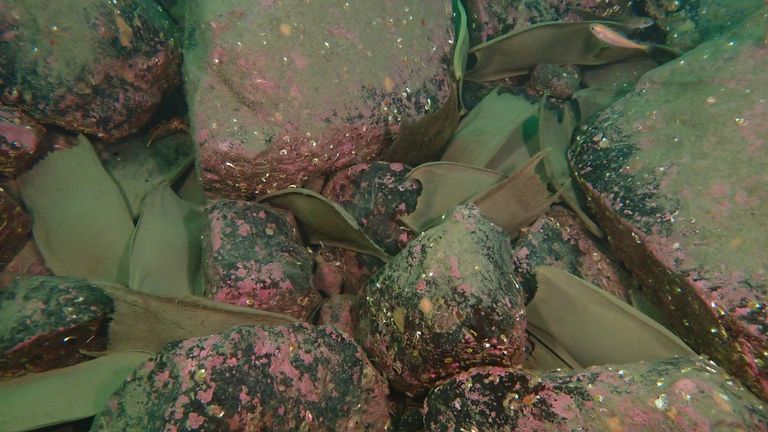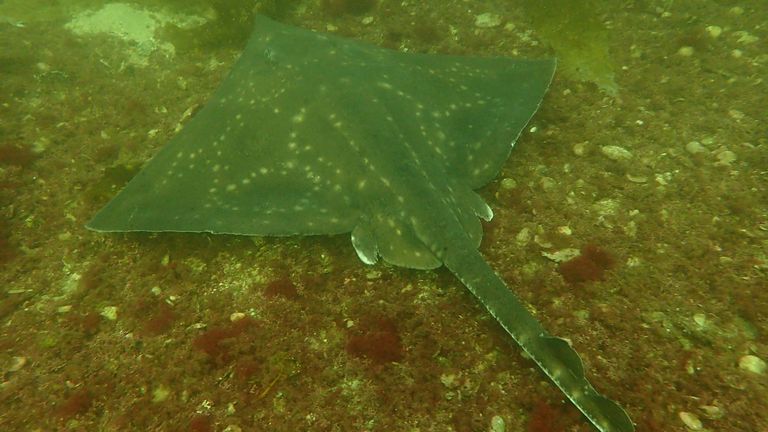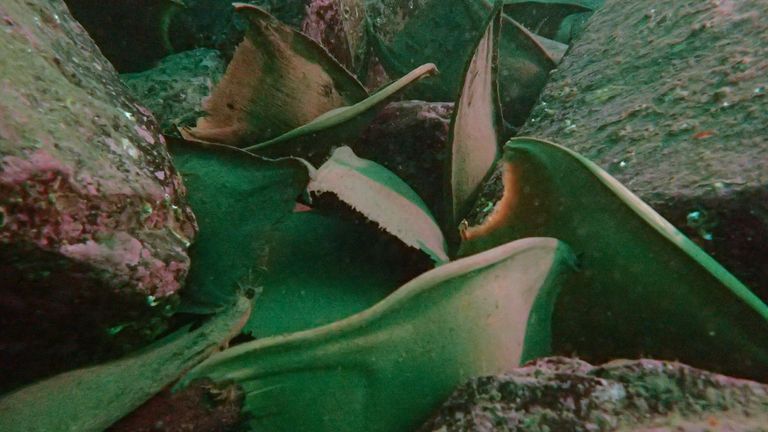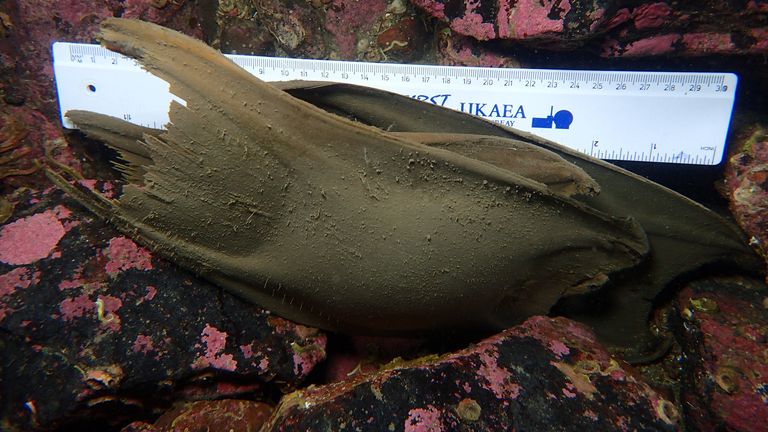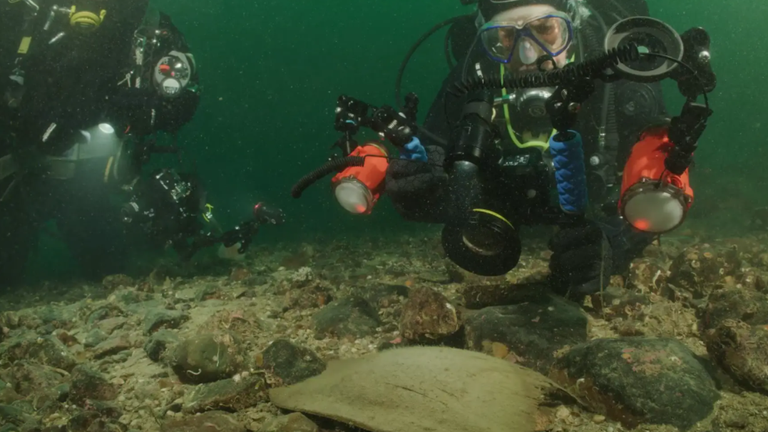Scotland: More than 100 critically endangered flapper skate eggs found off coast
More than 100 eggs belonging to the critically endangered flapper skate have been discovered on the rocky seabed off the northwest coast of Scotland.
Conservationists say it is one of the largest egg-laying sites discovered to date, but warn it is vulnerable to trawling and dredging.
Capable of reaching more than 2.5m (8ft) in length, the flapper skate is one of the largest skate species in the world.
Once known as the ‘common skate’ because of its abundance in British waters, it has been in decline for decades and is now extinct in most of its former range.
“They used to be called barn doors because they’re so enormous and when you see one up close, they’re absolutely huge,” said underwater photographer and conservationist Chris Rickard.
“Because they’re so big, they don’t really have any natural predators when they’re fully grown.
“However, they’re quite slow swimmers and they’re so big that they can quite easily get caught in the nets of a boat.
“And because they’re so slow growing, they’re also slow to reproduce. So if they’re caught any time before they spawn then there’s no young to replace them,” he said.
The flapper skate is one of 81 priority marine features the Scottish government is committed to protecting.
Ailsa McLellan, coordinator at the conservation coalition Our Seas, says the Scottish government is failing in its duties to protect the species.
“Less than 5% of our inshore waters are permanently protected from bottom towed fishing gear and even these marine ‘protected’ areas are still fished illegally.
“We are living through a biodiversity crisis and we need to act quickly to protect what is left,” she said.
The west coast of Scotland is one of the last places flapper skate can be found, and the recent discovery comes almost a year after divers recorded egg cases at the same site in November 2019.
Since 2009, it has been illegal for fishermen to target flapper skates commercially.
Bally Philip from the Scottish Creel Fishermen’s Federation explains how the giant, slow-growing species is still at risk of capture.
“They’re accidentally caught, especially in trawlers.
“They’re very big fish and even though trawlers are now fitted with these skate panels to let a lot of juvenile fish out, the larger fish, especially the big flat fish type species like skate, they’re almost impossible to get out of the net without releasing everything in the net.”
Flapper skate egg cases, or ‘purses’, can be more than 25cm (10in) long and take almost 18 months to hatch, making them vulnerable to incidental capture or damage by fishing gears.
“Unfortunately, both the purses themselves and the newly hatched young are so large that they can be caught in bottom towed gear and destroyed – a single pass with a dredge could obliterate the site,” Mr Rickard warned.
Marine protected areas currently cover around 30% of Scotland’s territorial waters, yet less than 5% of Scotland’s inshore waters are protected from trawling and dredging – two of the most damaging methods of fishing.
Scotland’s marine protected area (MPA) network is already in excess of 30% of our sea area – taking Scotland past the proposed new global target for 2030 currently being negotiated by the UN Convention on Biological Diversity.
The Scottish government told Sky News: “We welcome this discovery and have asked NatureScot to advise on possible protection.
“We will consider that advice carefully once it has been received and determine what potential action should be taken.”
Source: Read Full Article
